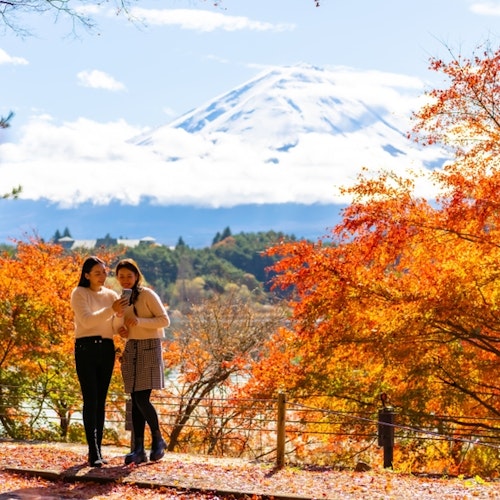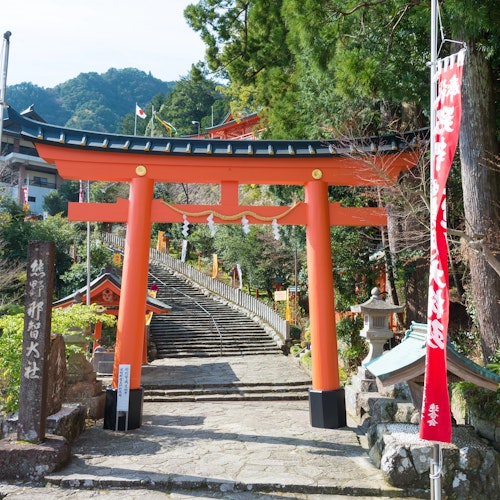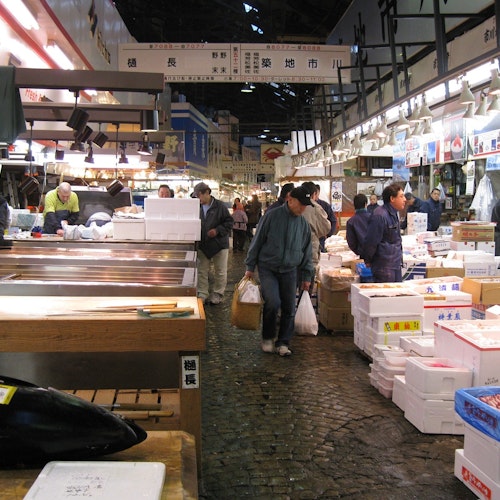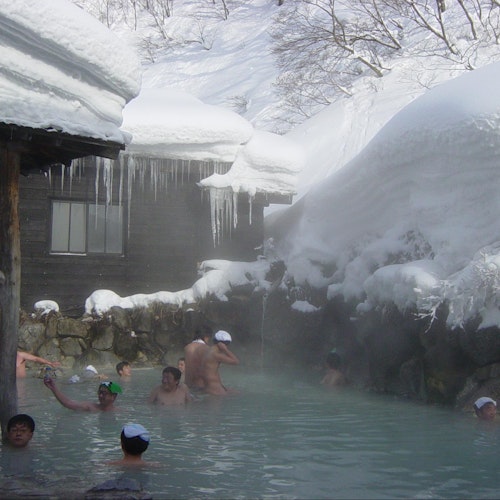
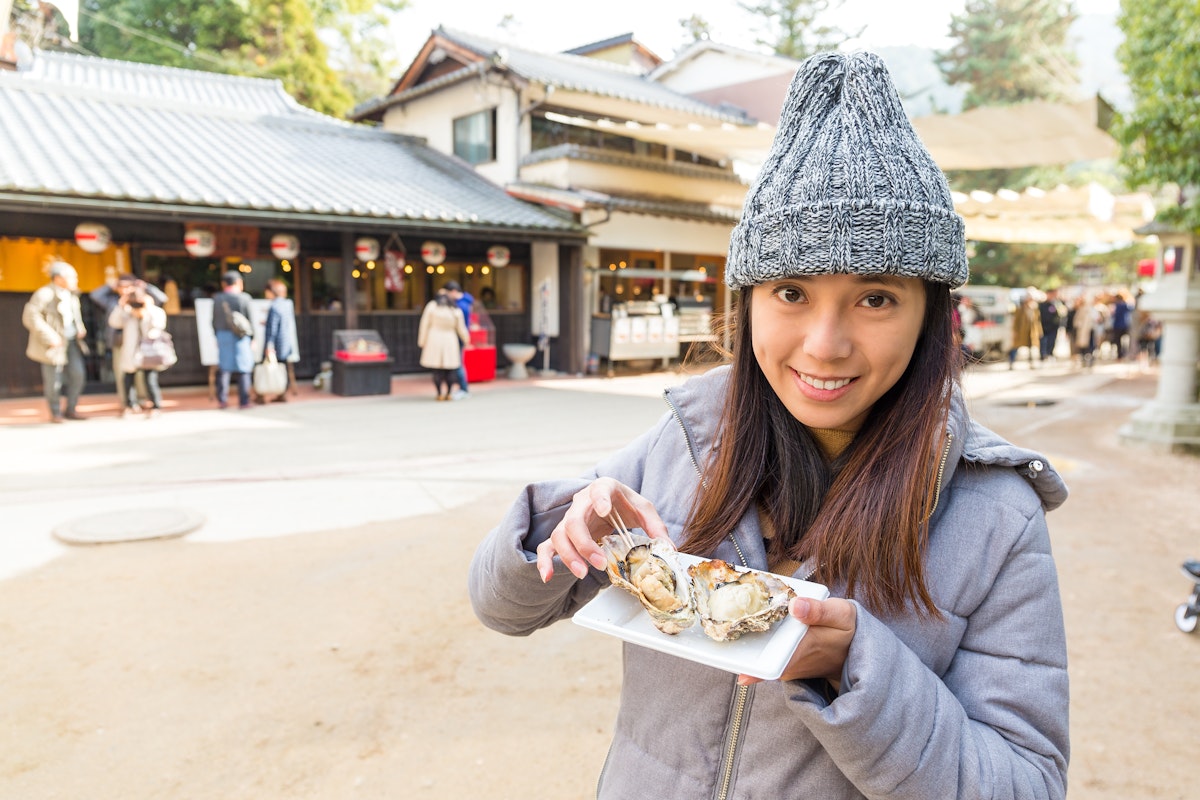
Japan is a country where every season is celebrated not just through nature but also through its food. The festivals here are closely tied to the changing seasons, highlighting the importance of seasonal ingredients and regional specialties. Each festival offers a chance to explore unique flavors and traditions, making it an experience worth planning for if you're a food lover.
This guide will walk you through the best food festivals in Japan and the must-try dishes at each event. From spring's cherry blossom-themed treats to winter’s comforting hotpots, there’s always something delicious waiting.
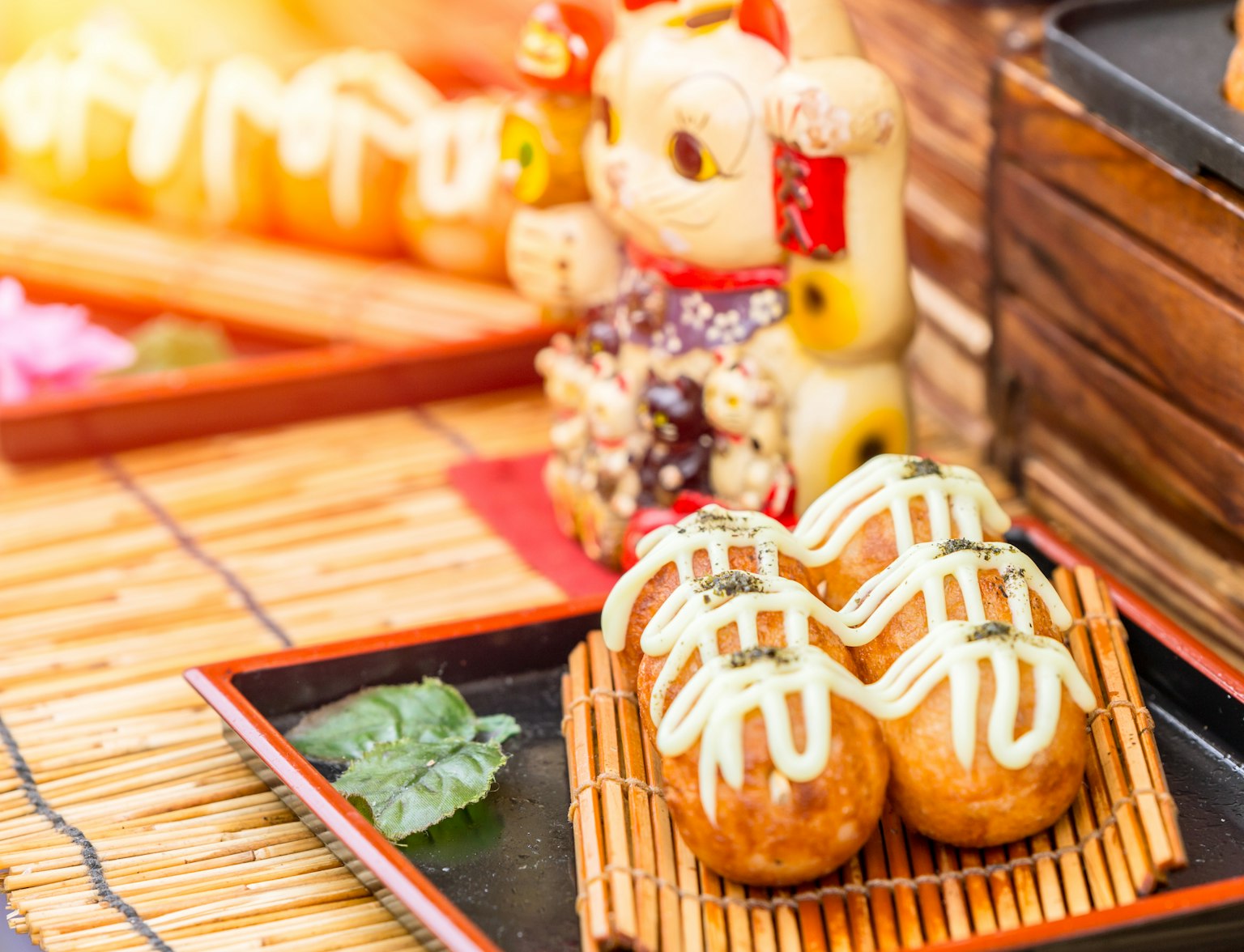
Embark on a culinary journey through the heart of Osaka's vibrant street food scene.
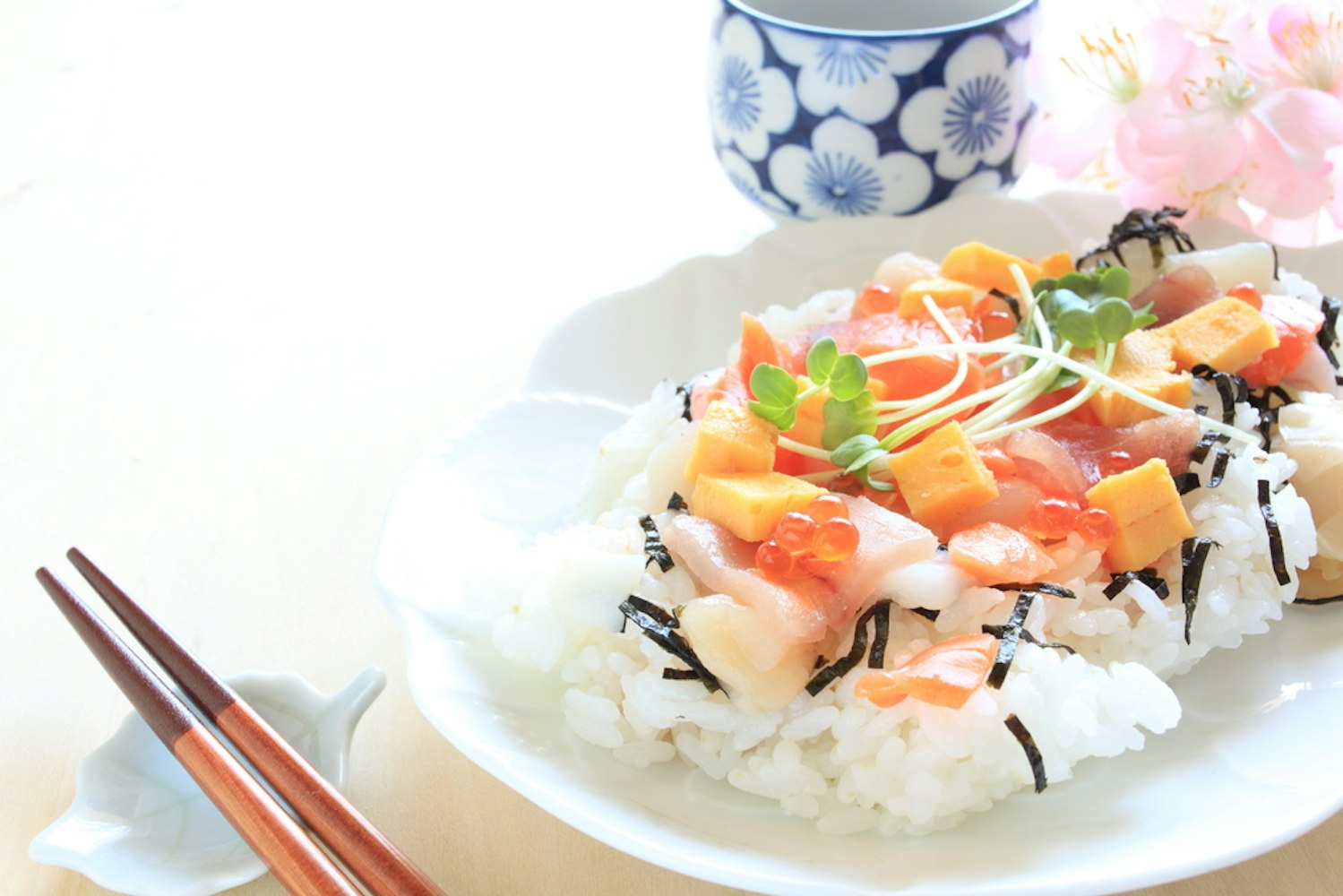
Hina Matsuri, held on March 3rd, is a day dedicated to the health and happiness of girls. Families display intricate doll sets and share festive dishes that symbolize prosperity and good fortune.
Among the highlights is chirashizushi, a vibrant dish made of vinegared rice topped with sashimi, shredded egg, and seasonal vegetables like lotus root and snow peas. Each ingredient has a symbolic meaning—shrimp signifies longevity, and lotus root represents clarity for the future.
Sweet treats like hina-arare (crispy rice crackers in pastel shades) are another staple. These light and crunchy snacks are often flavored with sugar or soy sauce, making them both sweet and savory. For dessert, sakura mochi is a must-try. This pink rice cake, filled with red bean paste and wrapped in a salted cherry blossom leaf, perfectly captures the essence of spring.
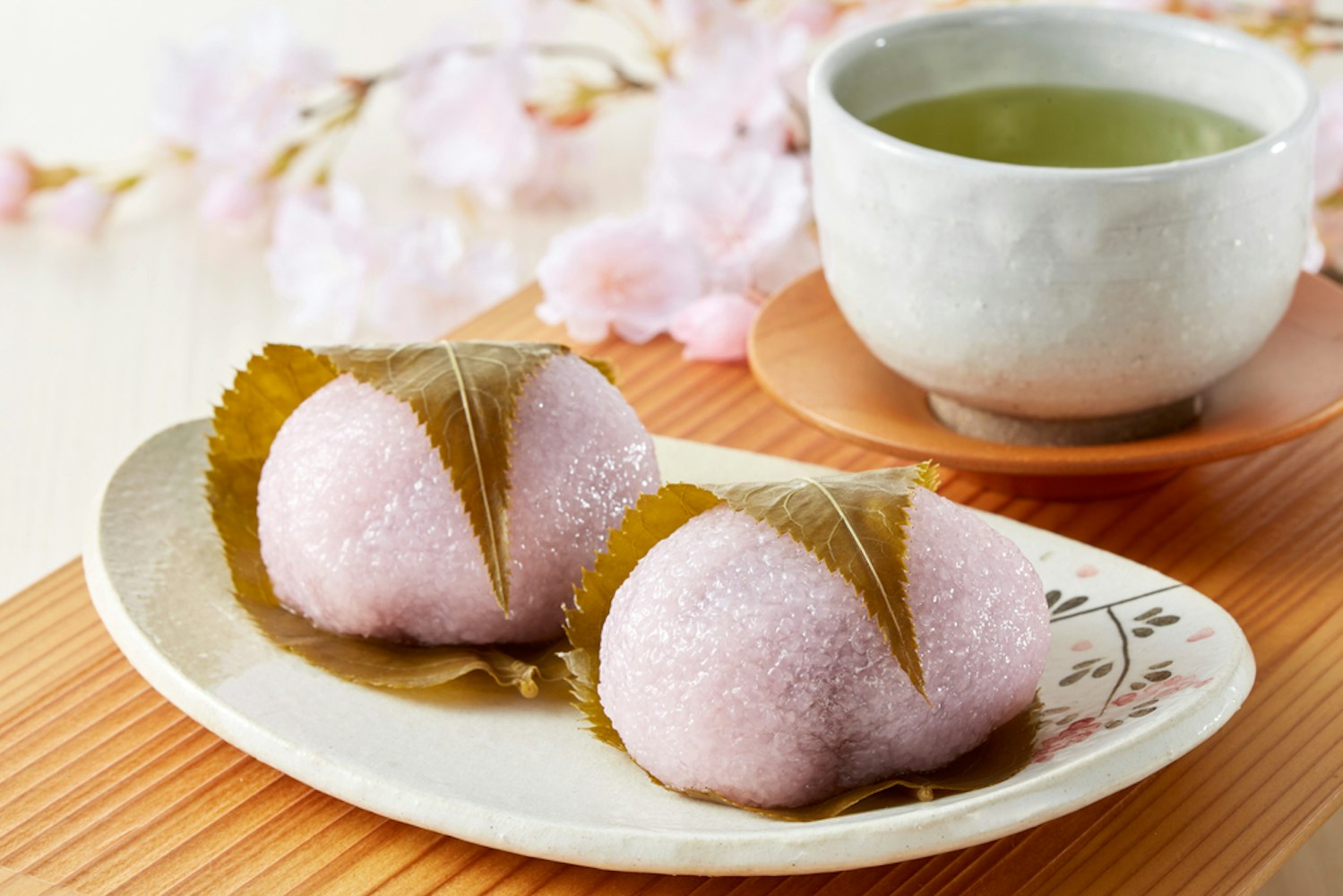
As cherry blossoms bloom across Japan from late March to early April, parks and streets transform into festive gathering spots for hanami (flower viewing). The food at cherry blossom festivals is just as delightful as the flowers themselves. Sakura dango, a skewer of pink, white, and green rice dumplings, is not only a popular snack but also a symbol of spring harmony.
Cherry blossom-themed bento boxes are a common sight at these festivals. Packed with seasonal ingredients like grilled salmon, tamagoyaki (rolled egg), and pickled vegetables, these bentos are often decorated to resemble blooming flowers.
Drinks like sakura-infused tea or pink sake complement the delicate flavors of the dishes. In regions like Kyoto, you might find sakura-flavored yatsuhashi (a cinnamon-flavored sweet) or sakura tempura, where cherry blossom petals are fried in a light batter.
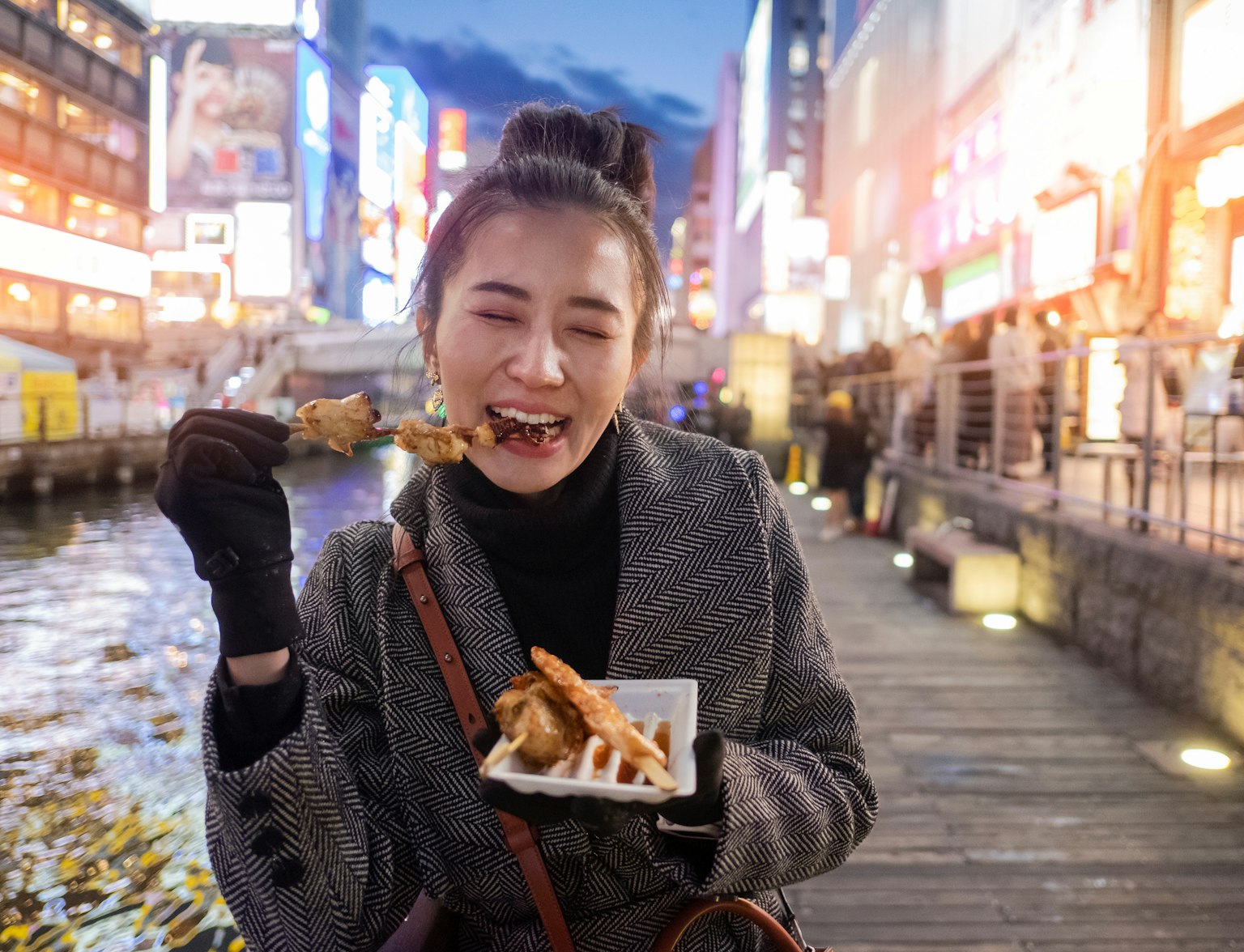
Experience the ultimate culinary journey in Dotonbori, Osaka, with our Private Foodie Tour.
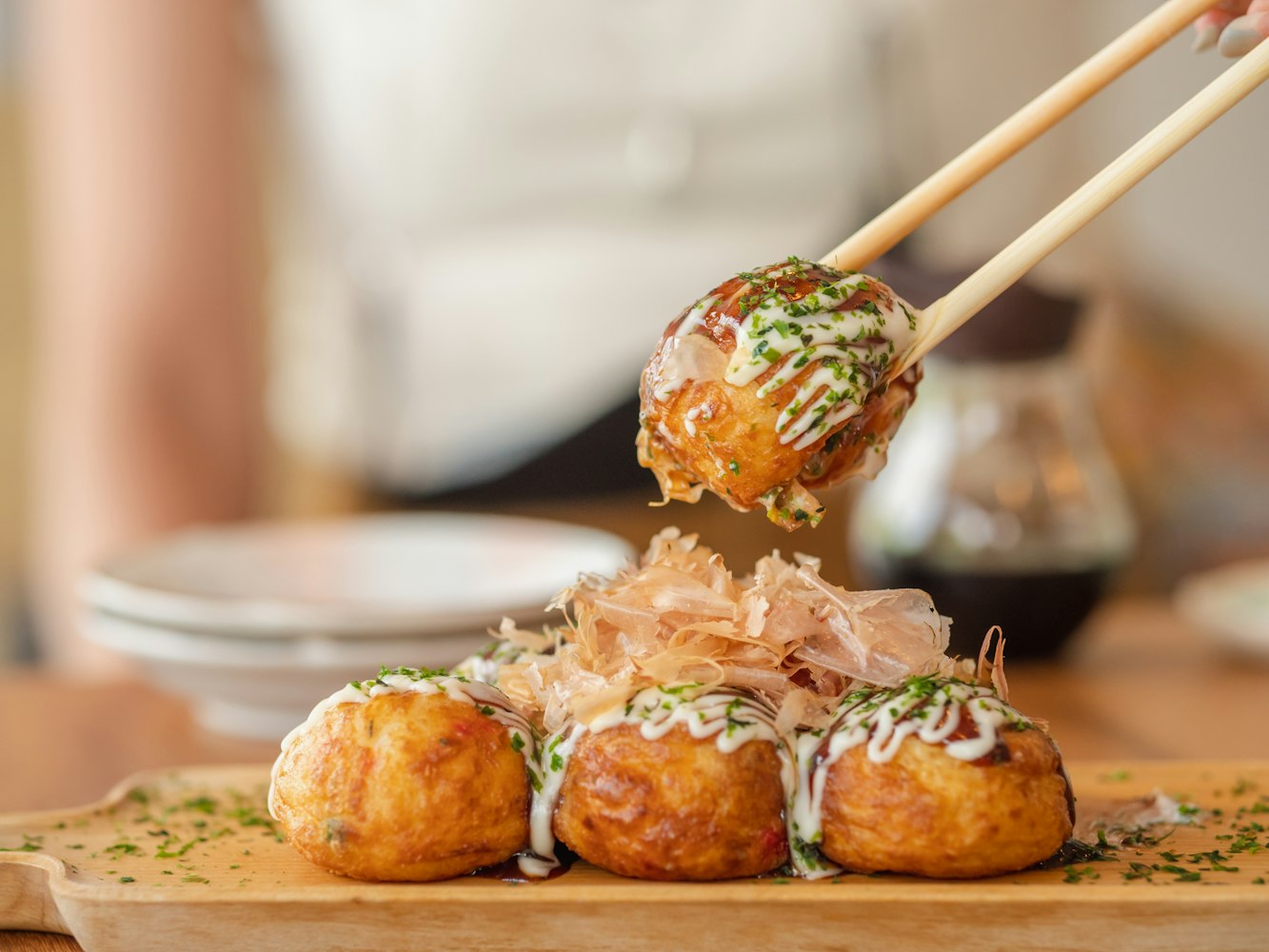
Taking place in mid-May in Tokyo, Kanda Matsuri is one of Japan’s largest festivals, attracting thousands of visitors with its grand parades and street food offerings. The festival showcases some of the best traditional street foods, including yakitori (grilled chicken skewers seasoned with salt or tare sauce) and takoyaki (crispy octopus balls with mayo and bonito flakes).
Sweet options like taiyaki, a fish-shaped cake filled with red bean paste or custard, are crowd favorites. During this festival, you might also encounter imagawayaki, a similar pancake snack with a variety of fillings ranging from chocolate to matcha cream. These foods are easy to enjoy as you stroll through the lively streets.
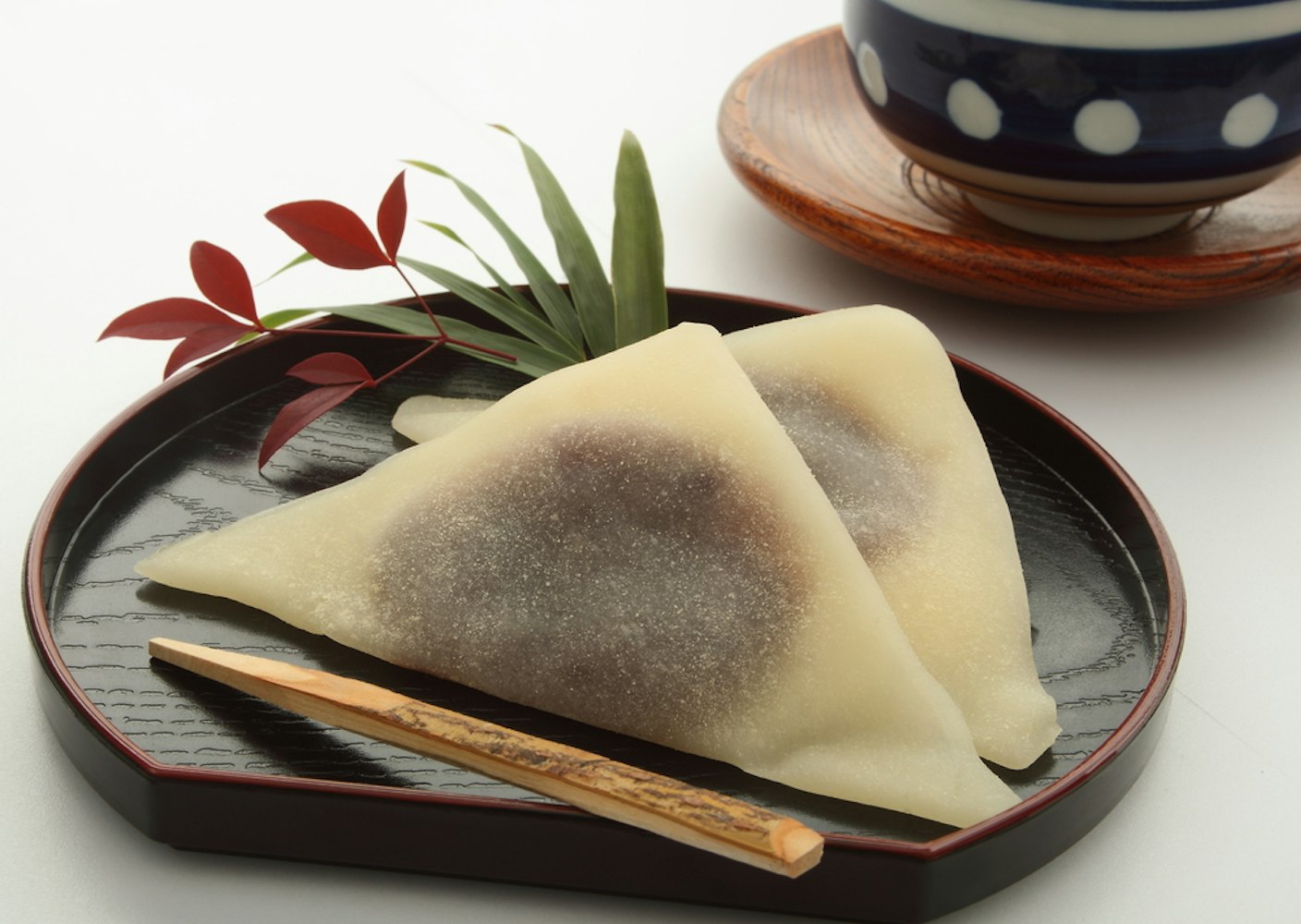
Kyoto’s Gion Matsuri, celebrated throughout July, is one of Japan’s oldest and most famous festivals. Known for its elaborate floats and processions, the festival is also a treasure trove of traditional food. One standout is yatsuhashi, a Kyoto specialty made from glutinous rice flour, sugar, and cinnamon. The soft version is often filled with red bean paste, while the baked version is crunchy and perfect as a souvenir.
During Kyoto’s hot summers, cooling desserts like kakigori (shaved ice) are a lifesaver. These desserts come with a variety of toppings, including matcha syrup, condensed milk, and seasonal fruits. Some stalls even offer luxurious versions topped with gold leaf or fresh cream.
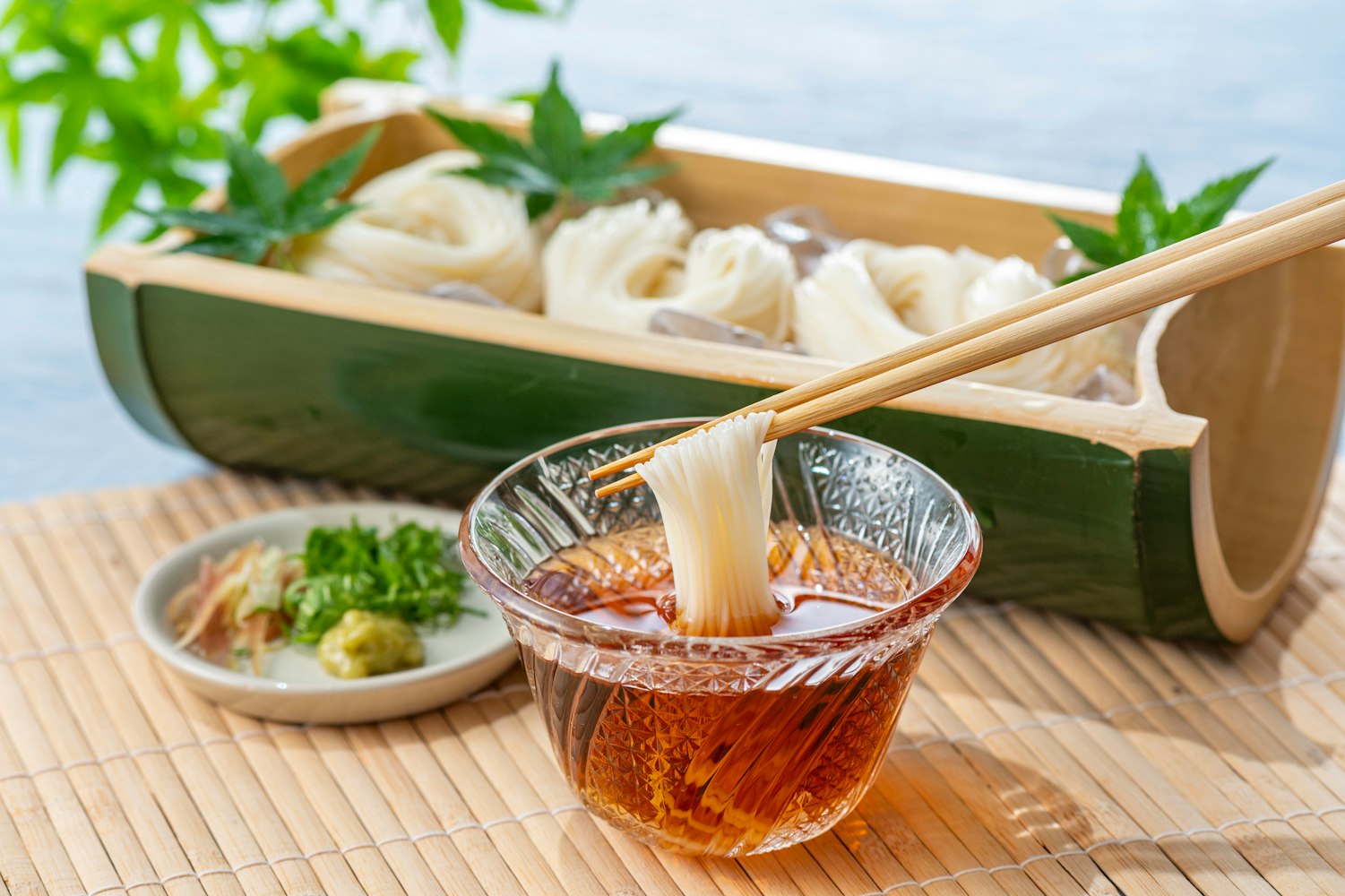
Based on the legend of two celestial lovers separated by the Milky Way, the Tanabata Festival takes place in July or August. Foods during this festival often reflect the starry theme. Chilled somen noodles are a traditional dish, served with a light dipping sauce and sometimes topped with star-shaped vegetables like carrots or cucumbers.
Sweet treats, such as colorful jelly desserts or wagashi shaped like stars, are another highlight of Tanabata. Some regions even serve tanabata sushi, where ingredients like egg, cucumber, and salmon are arranged to mimic the night sky. These dishes not only taste amazing but also tell a story of love and hope.
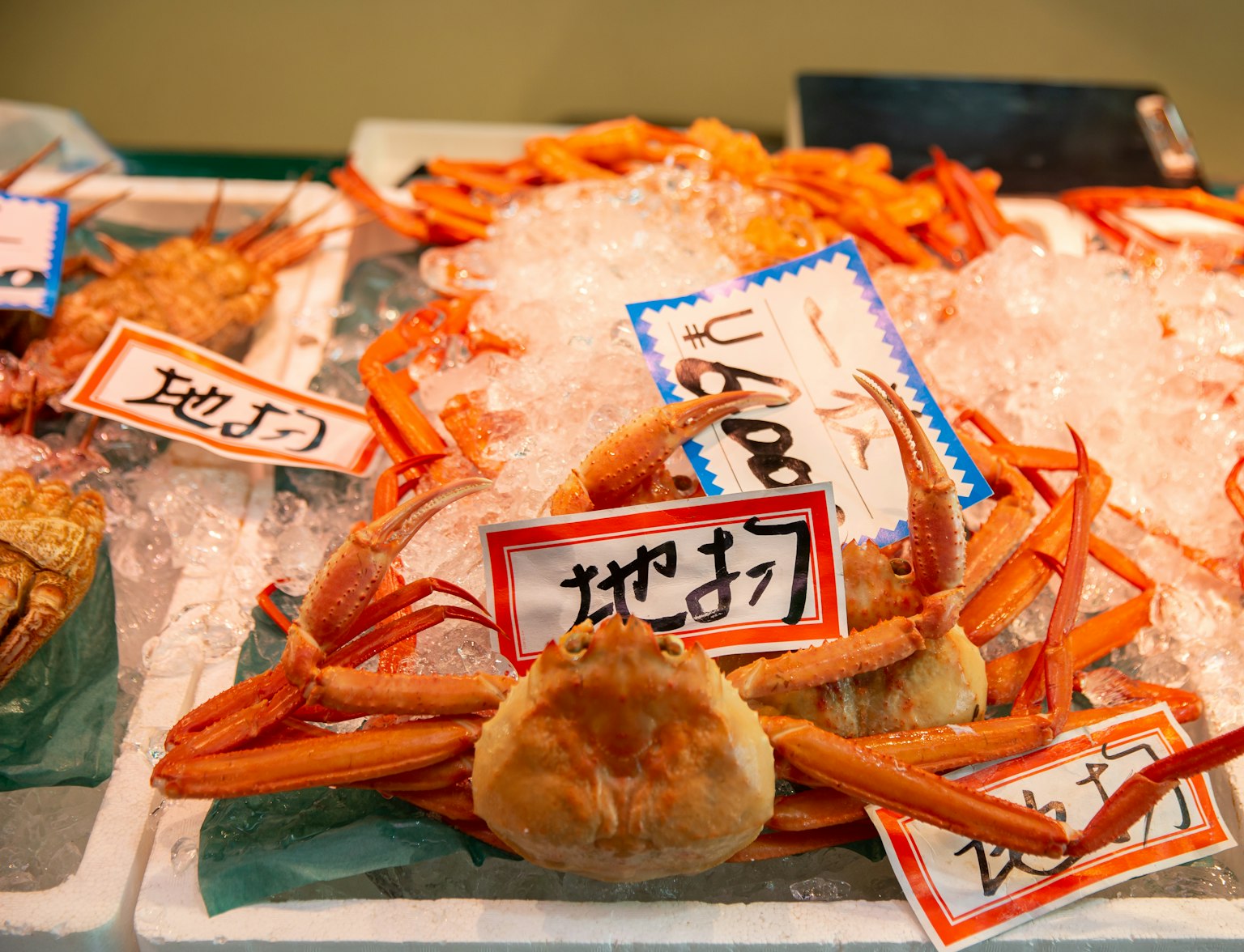
Join our Kanazawa food tour to experience the city's culinary highlights with a local guide.
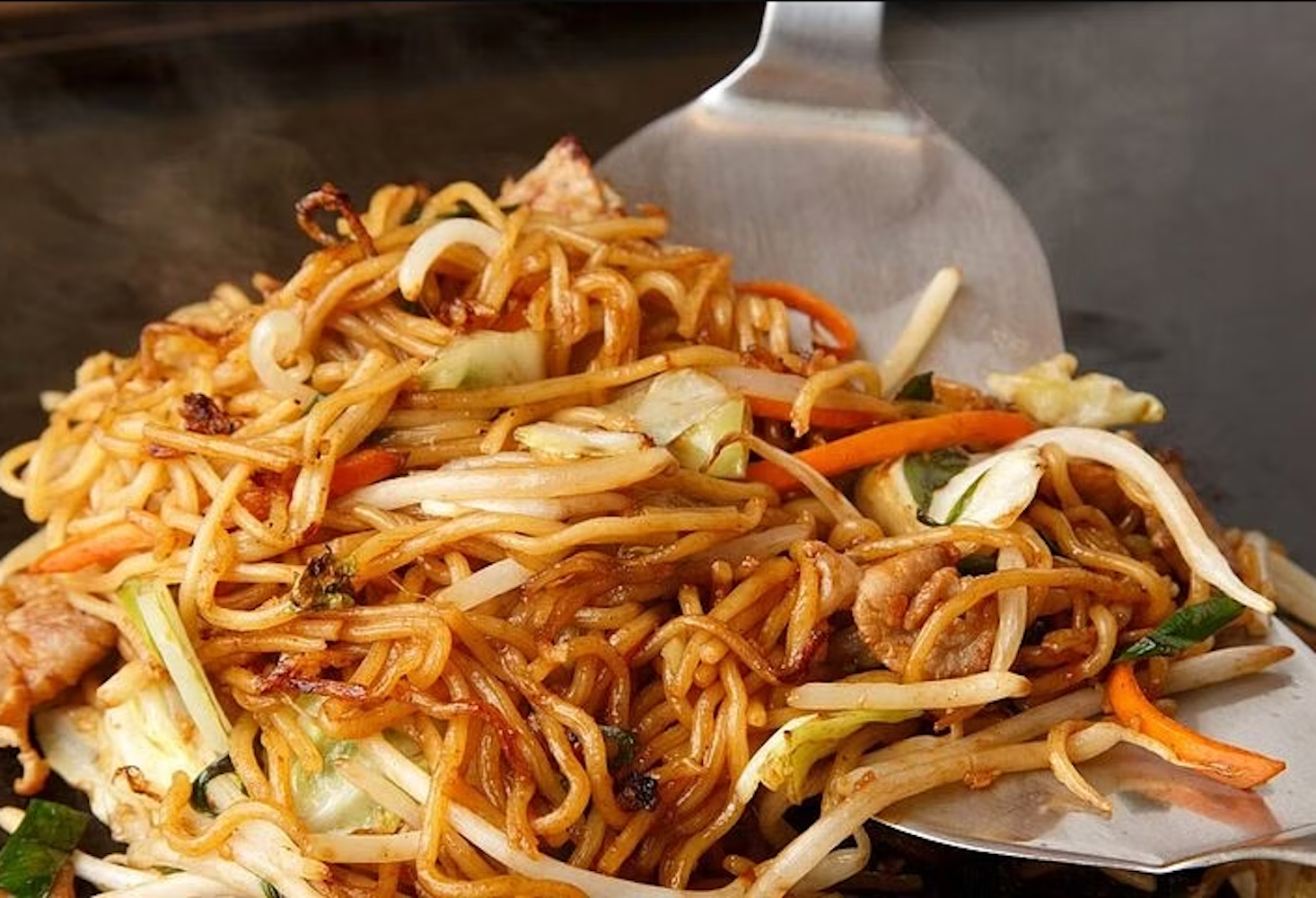
Summer fireworks festivals bring an explosion of flavors to match the colorful displays in the sky. Popular dishes include yakisoba, stir-fried noodles with pork and vegetables, and ika-yaki (grilled squid on a stick), which is often brushed with a sweet soy glaze.
Festival-goers flock to stalls offering karaage (Japanese fried chicken), known for its juicy interior and perfectly crispy coating. Desserts like candied apples and chocolate-dipped bananas are ideal for children, while adults might enjoy chilled beer or sake with their savory snacks.
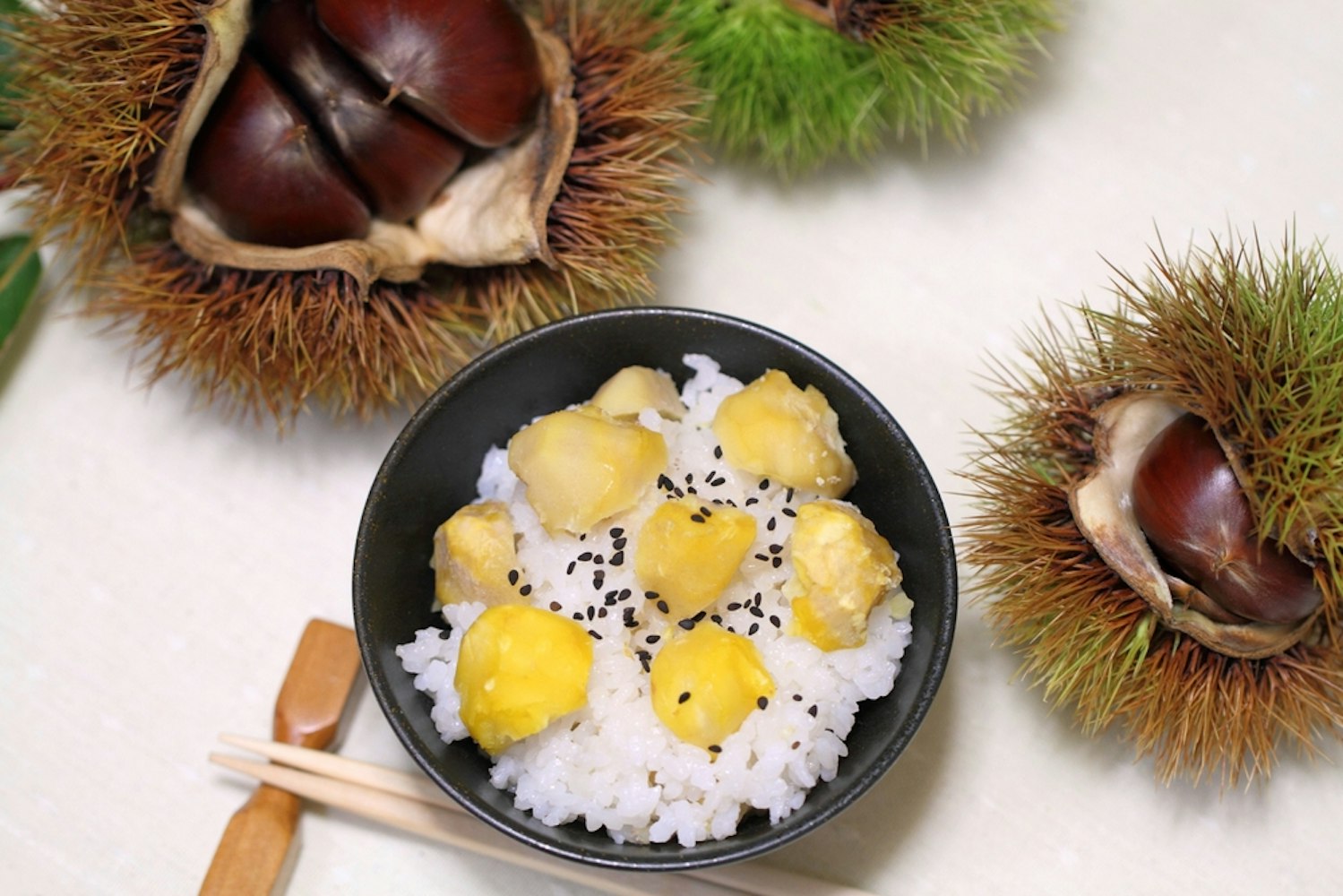
Autumn is harvest season, and food festivals across Japan celebrate the bounty of nature. Kuri-gohan, a rice dish with chestnuts, is a beloved autumn specialty. The natural sweetness of the chestnuts pairs beautifully with the slightly salty rice. Other popular ingredients include satsumaimo (sweet potatoes) and kabocha (Japanese pumpkin), often served grilled or simmered.
Matsutake mushrooms, a highly prized ingredient, are a centerpiece of autumn cuisine. These aromatic mushrooms are typically grilled with a sprinkle of salt or used in simple soups to highlight their distinct flavor. Some festivals even hold auctions for matsutake, reflecting their high value.
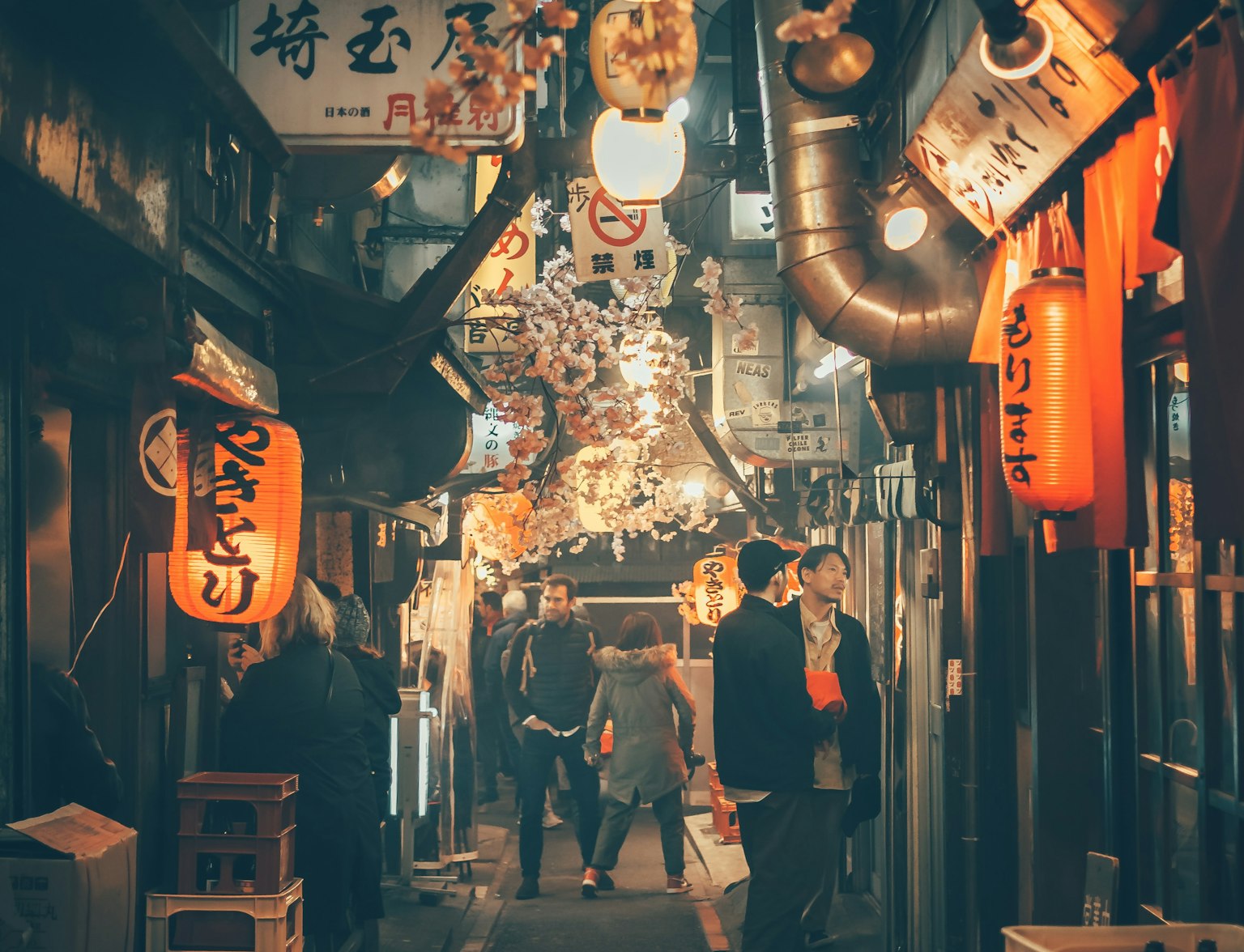
Discover Tokyo's vibrant food scene through a guided tour.
Chrysanthemums are not just beautiful flowers but also edible ingredients celebrated during the Kiku Matsuri. Kiku-mochi, rice cakes shaped like chrysanthemums, are a festive treat during this time. Chrysanthemum petals are also used in salads, soups, and even sake, adding a subtle floral note to the dishes.
Other autumn classics include grilled fish like sanma (Pacific saury), which is best enjoyed with a squeeze of lime and a side of grated daikon radish. These dishes capture the essence of autumn and the Japanese philosophy of appreciating simple, natural flavors.
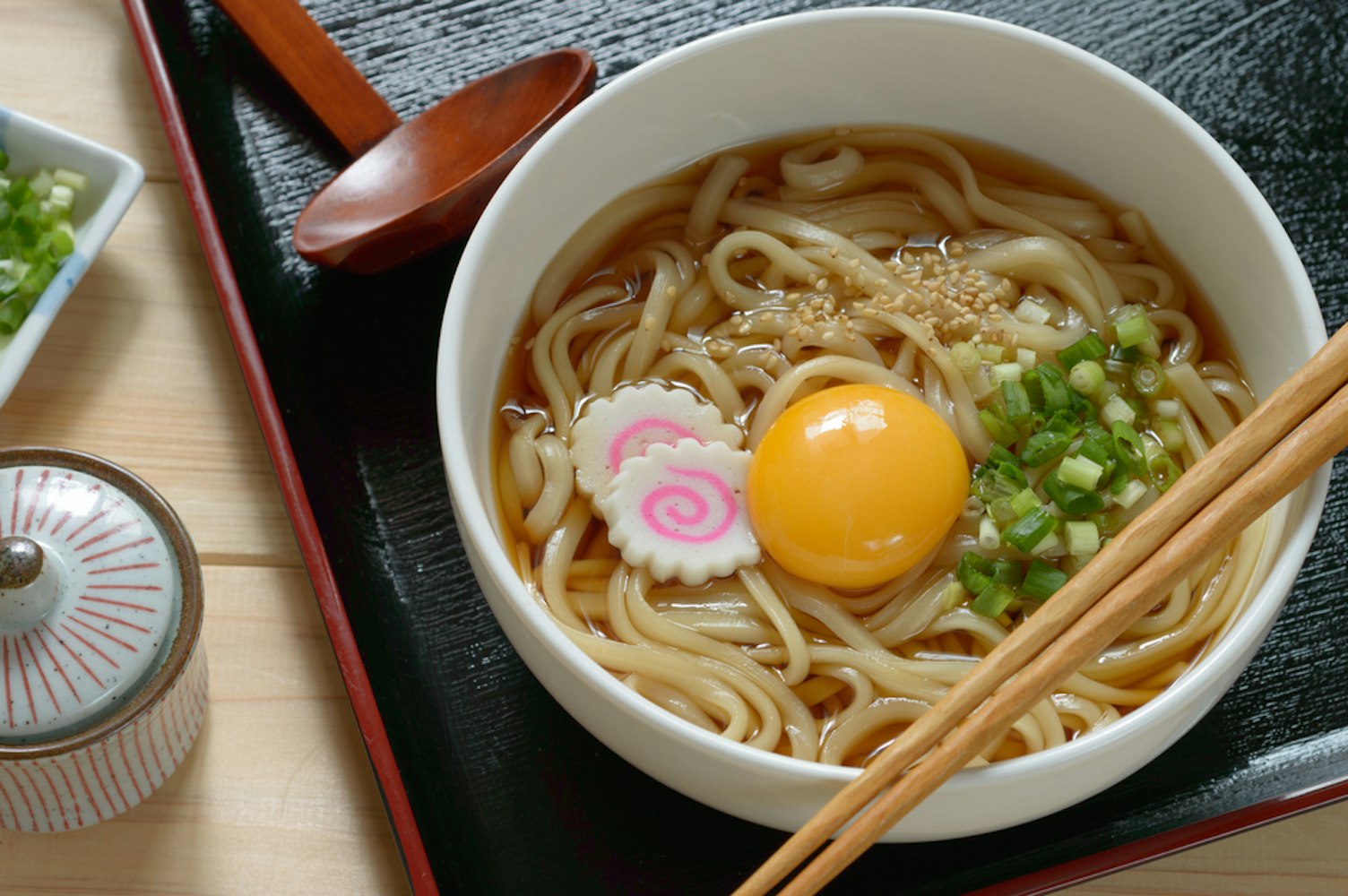
Autumn’s Moon-Viewing Festivals celebrate the full moon with foods that mimic its round, golden appearance. Tsukimi dango, soft rice dumplings, are a symbolic offering and a delicious snack often served with soy sauce or sweet bean paste.
Egg-based dishes, like tsukimi udon or tsukimi soba, feature a raw or poached egg placed on top of noodles to represent the moon. These comforting dishes are perfect for cooler autumn evenings and embody the beauty of the season.
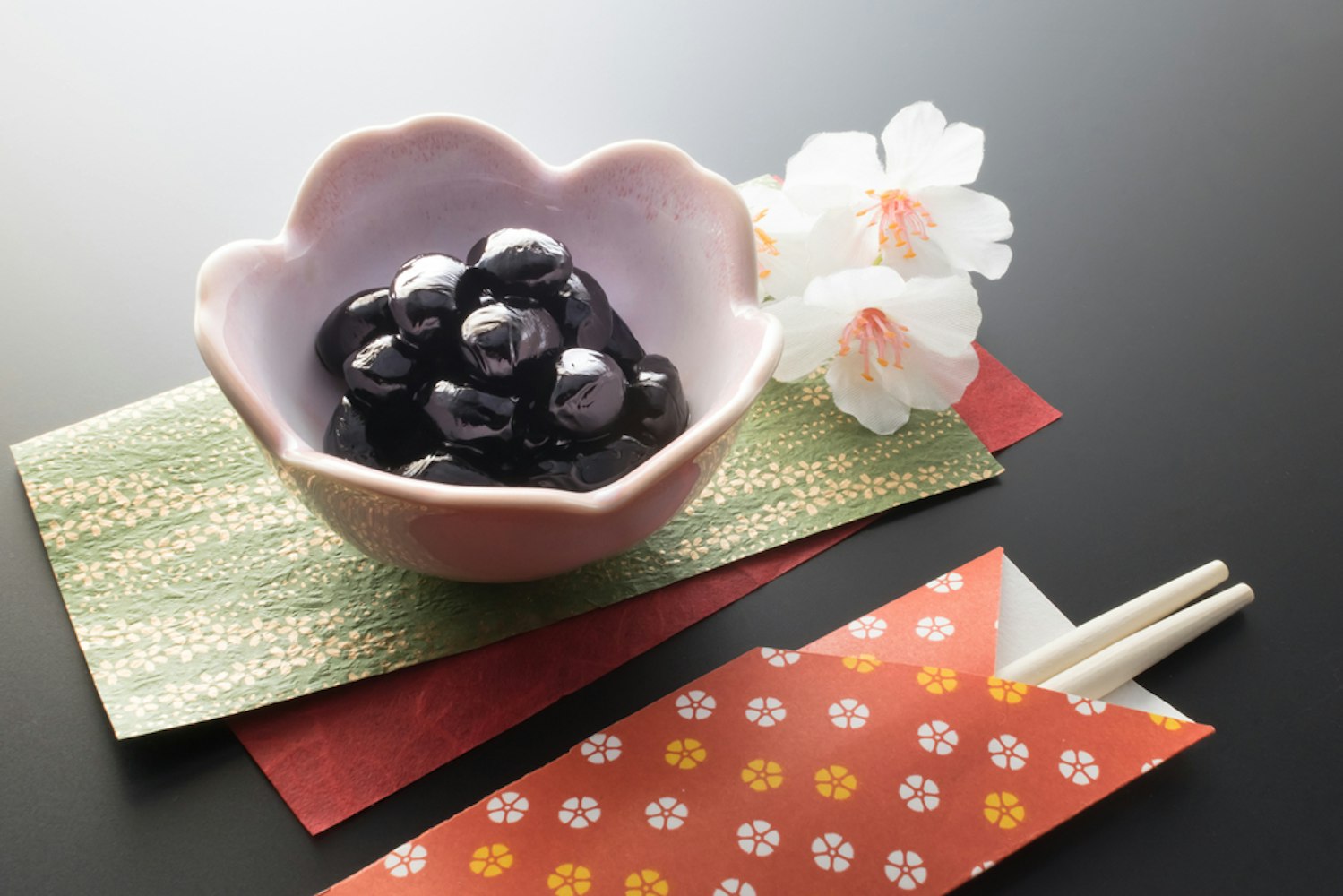
Japan’s New Year celebrations are steeped in tradition, and food plays a major role. Osechi-ryori, a collection of intricately prepared dishes, is served in beautiful lacquered boxes. Each item carries a symbolic meaning: kazunoko (herring roe) signifies fertility, while kuromame (sweet black beans) represents health and diligence.
Mochi is another staple of the New Year. Ozoni, a soup made with mochi, vegetables, and sometimes chicken or seafood, is a comforting dish that varies by region. Sweet mochi treats like kinako mochi (mochi dusted with roasted soybean powder) are also popular during this time.
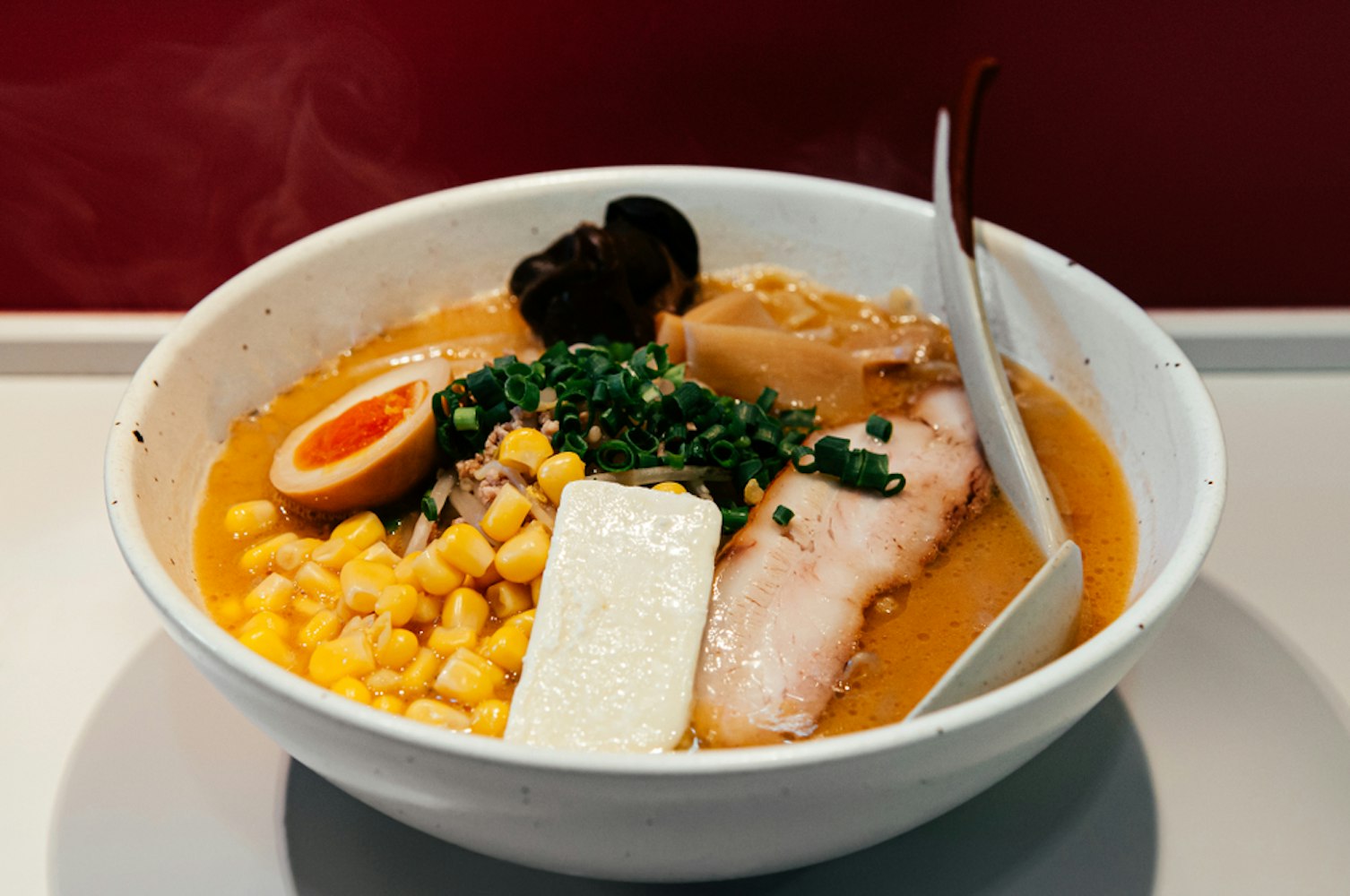
The Sapporo Snow Festival in February is famous for its breathtaking snow sculptures, but the food scene is just as impressive. Hokkaido’s signature miso ramen, topped with butter, corn, and seafood, is a winter favorite. Kani nabe (crab hotpot), featuring freshly caught Hokkaido crab, is another must-try dish that showcases the region’s renowned seafood.
For dessert, try anko yaki-imo, a baked sweet potato filled with red bean paste. This warm, sweet treat is perfect for strolling through the snowy festival streets.
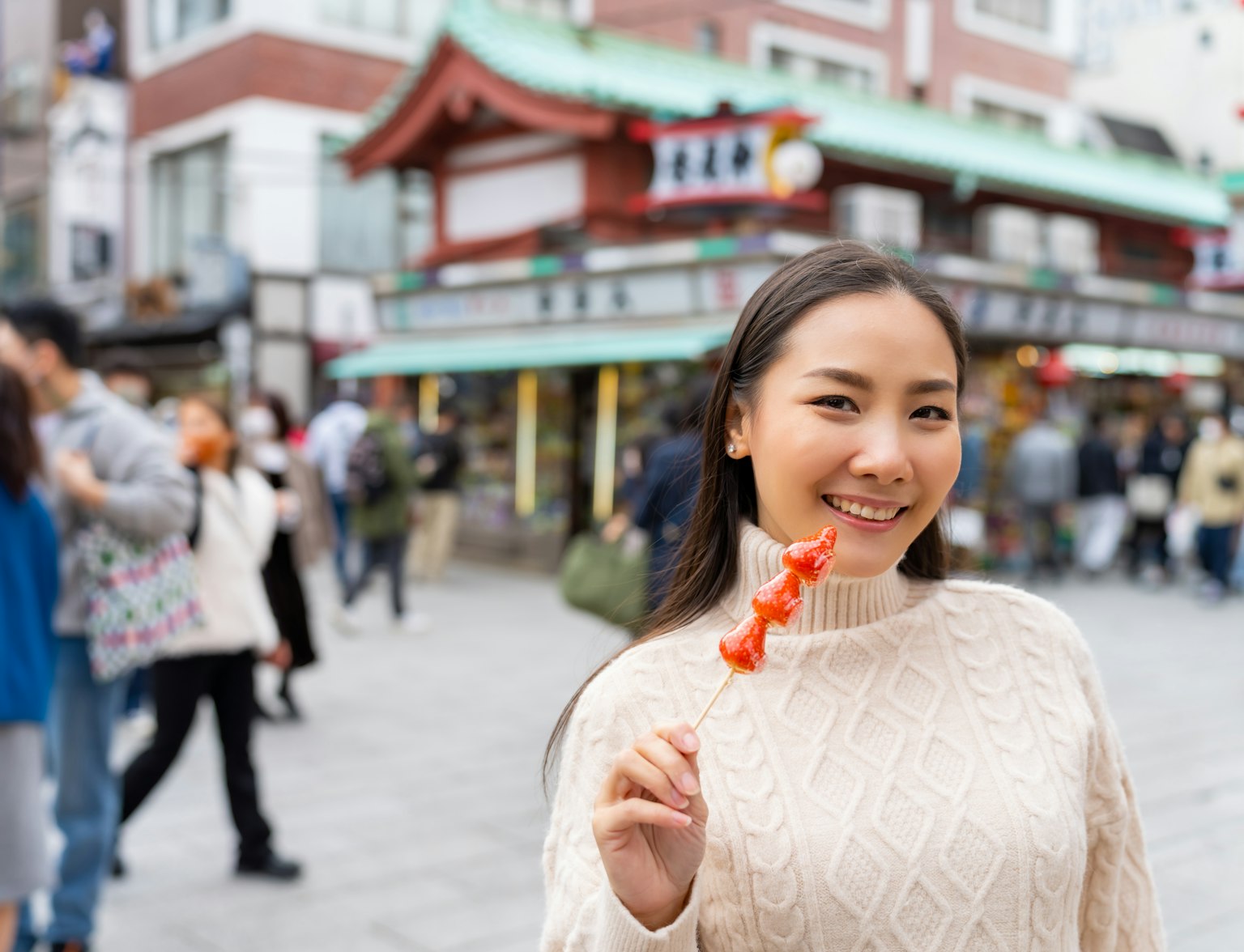
Explore Tokyo's culinary secrets on a 4-hour guided food tour.
Setsubun, celebrated in February, marks the transition from winter to spring. The centerpiece of this festival is ehomaki, a thick sushi roll filled with ingredients like egg, cucumber, and eel. These rolls are eaten while facing a specific direction thought to bring good fortune.
Roasted soybeans, known as fukumame, are another important part of the festival. They are thrown around homes to drive away evil spirits and eaten as a symbol of good luck—one bean for each year of your age.
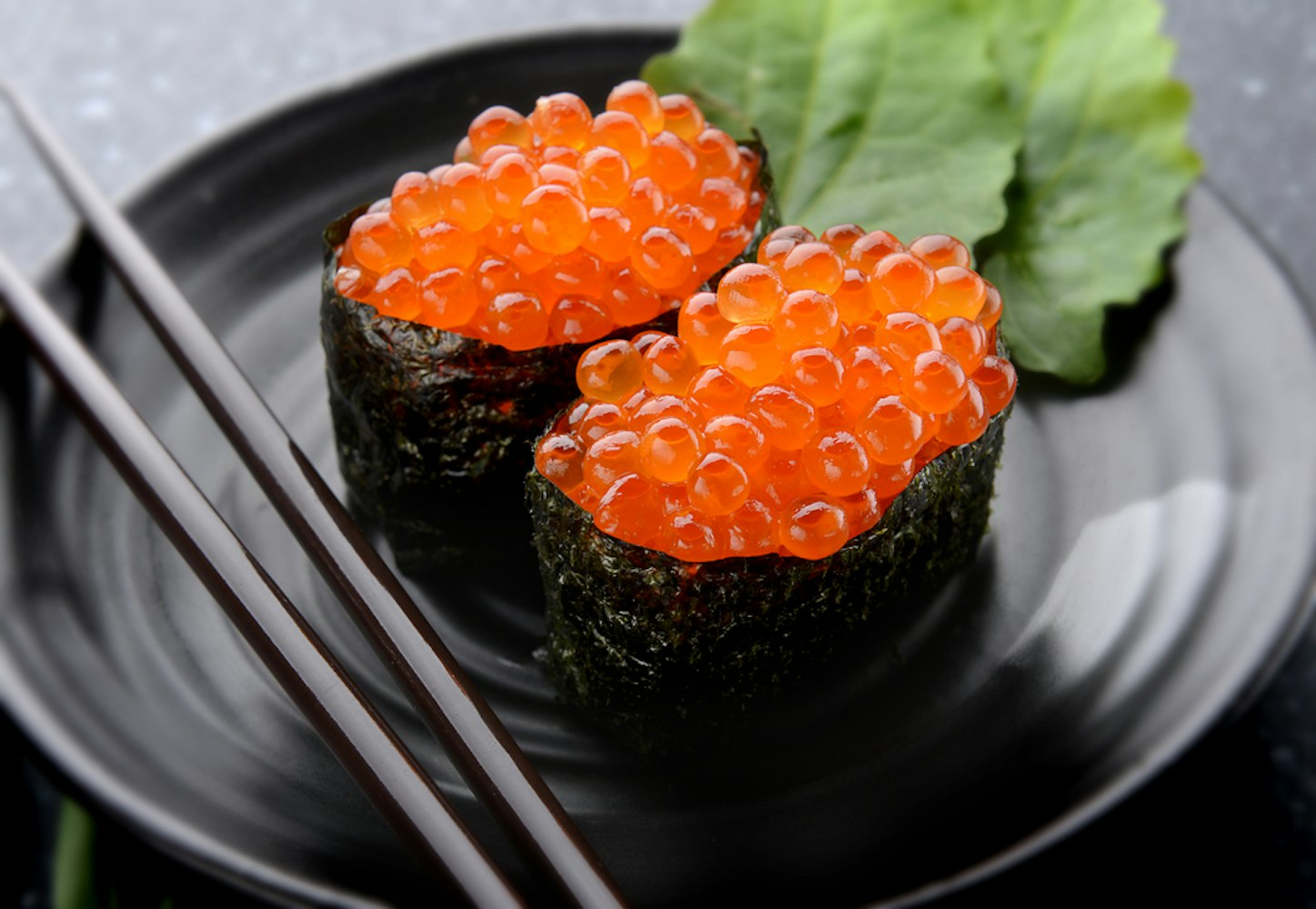
Hokkaido, Japan’s northernmost island, is renowned for its fresh seafood and dairy products. Festivals in this region celebrate the bounty of its surrounding seas and fertile lands.
One of the highlights is the Hokkaido Seafood Festival, where visitors can feast on delicacies like uni (sea urchin), kani (crab), and ikura (salmon roe). These ingredients are often served atop bowls of steaming rice, making dishes like kaisen-don (seafood rice bowls) a must-try. The quality of seafood here is unparalleled, with each bite bursting with natural flavor.
Hokkaido is also famous for its dairy products, and regional festivals frequently feature creamy soft serve ice cream, buttery corn on the cob, and rich cheese-based dishes. During the colder months, hot and hearty meals like jingisukan (grilled mutton) and soup curry take center stage, offering comfort and warmth to festival-goers.

Kyushu, in southwestern Japan, is known for its bold and spicy flavors. Food festivals here often highlight dishes that showcase the region’s love for hearty and flavorful cuisine.
At the Fukuoka Ramen Show, visitors can explore a variety of ramen styles, with tonkotsu ramen (rich pork bone broth) being the star of the show. This dish is deeply associated with Fukuoka and is served with thin noodles, tender slices of pork, and green onions. Each bowl is a testament to the region’s culinary expertise.
Kyushu’s festivals also feature unique snacks like karashi renkon, a lotus root stuffed with spicy mustard, and coated in a thin layer of batter before being fried. For meat lovers, yaki-niku (grilled meat) stalls are a common sight, serving up tender cuts of beef, pork, or chicken seasoned to perfection. Sweet treats like mizu yokan (chilled sweet bean jelly) are also popular during summer festivals, offering a refreshing way to cool down.
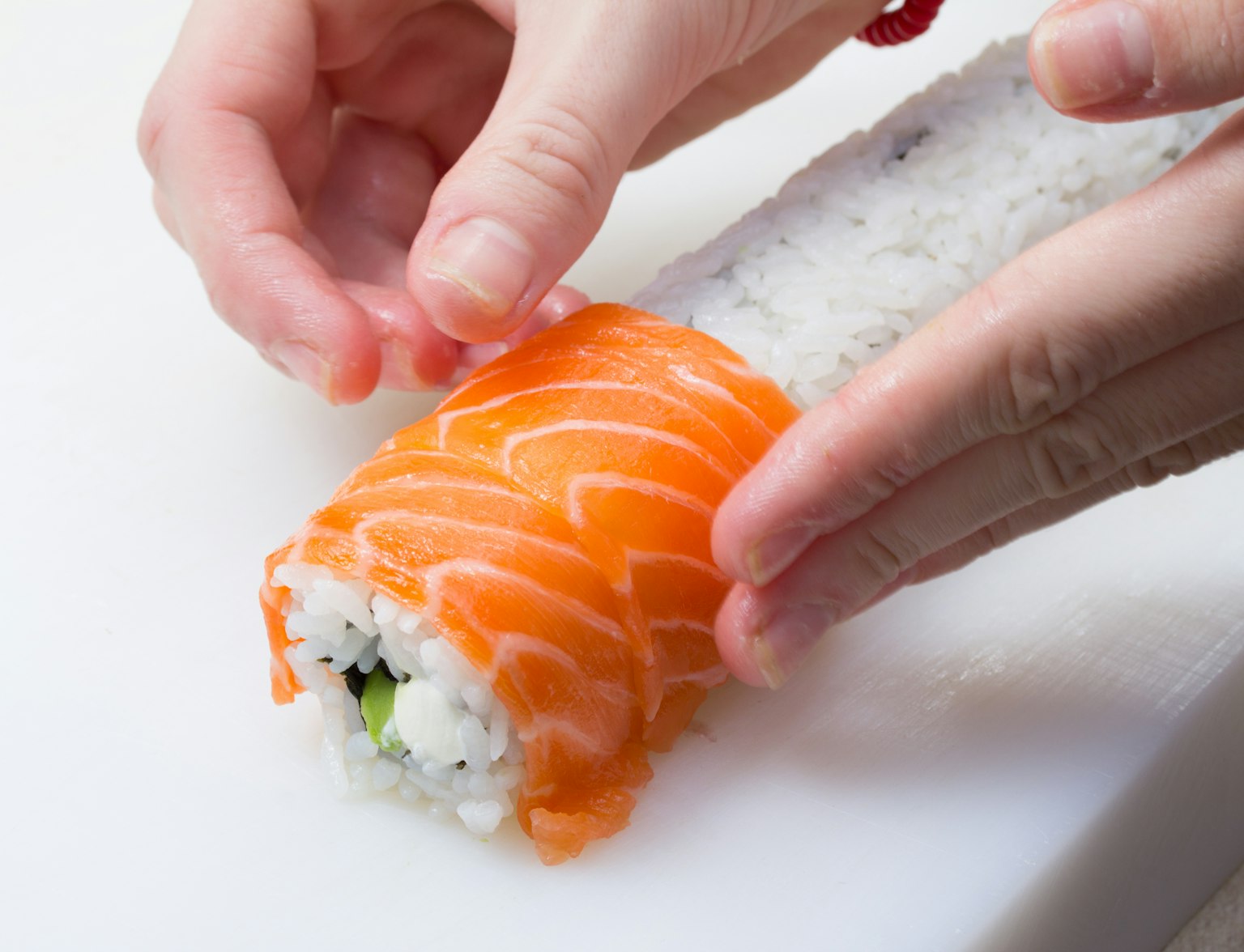
Master the art of making eight traditional nigiri sushi and one sushi roll.
As Japan’s capital, Tokyo brings together flavors from across the country in its many food festivals. These events offer a convenient way to sample regional specialties without traveling far.
The Tokyo Ramen Expo is a prime example, featuring dozens of ramen vendors from different prefectures. From the miso-rich broths of Hokkaido to the soy-based soups of Kansai, this event showcases the diversity of ramen styles. Another popular event is the Sushi Festival, where master chefs demonstrate their skills while serving fresh sushi using premium ingredients like tuna, amberjack, and uni.
Tokyo’s food festivals don’t stop at Japanese cuisine; they often feature international dishes as well. Visitors can enjoy everything from French pastries to Korean BBQ, making these events a global culinary adventure. Seasonal festivals, like the Autumn Gourmet Festival, highlight dishes made with seasonal produce, such as chestnuts, pumpkins, and mushrooms.
Planning your visit around Japan’s food festivals is one of the best ways to experience the country’s unique culinary heritage. Each season offers distinct flavors, from fresh spring blossoms to hearty winter stews, making it easy to tailor your journey to your taste preferences.
To make the most of your trip, research the timing of festivals and the specialties each region is known for. This ensures you’ll get to experience local ingredients at their peak and dishes that might not be available elsewhere. By diving into these seasonal events, you’ll uncover hidden gems of Japanese cuisine and bring home unforgettable food memories.
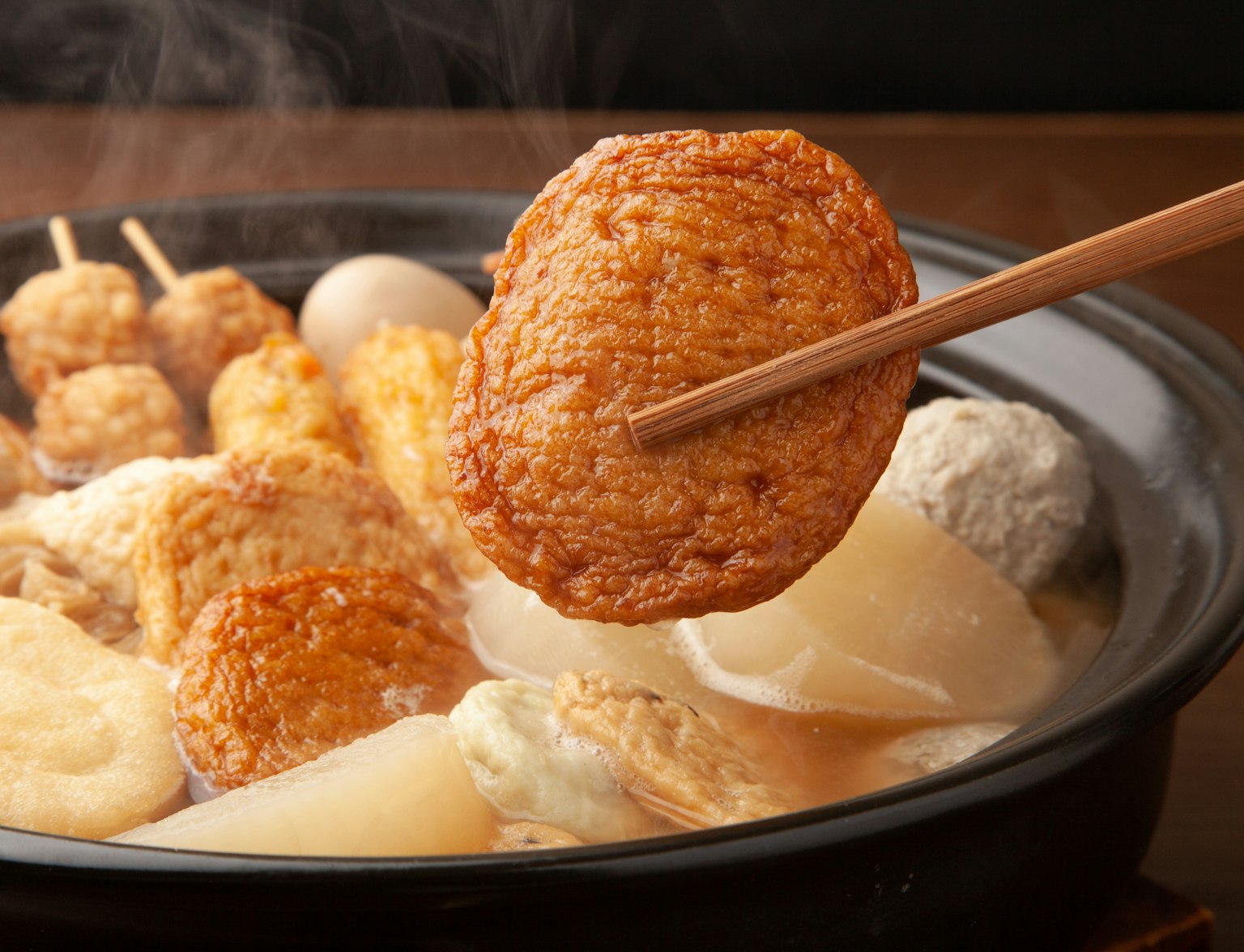
Experience the culinary evolution of Japanese cuisine on a private Tokyo food tour.
